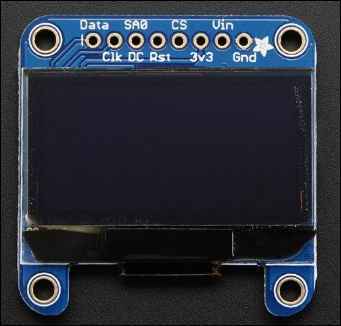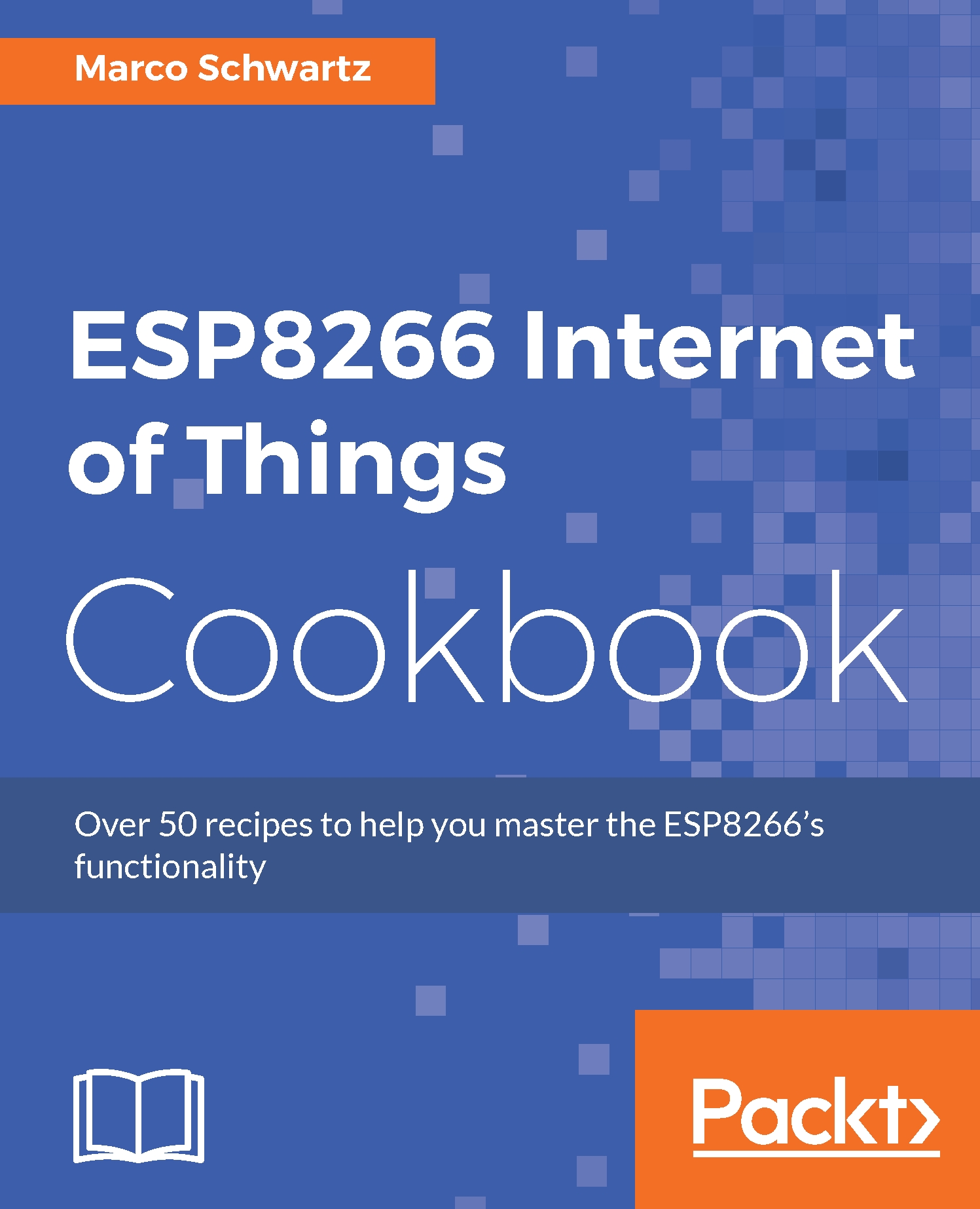Controlling an OLED screen
To make your ESP8266 projects more interactive, you have to use more comprehensive ways of displaying data and information. This can be achieved with an OLED screen. Using it, you will be able to display writing and images, enabling one to know the current state of the project and to monitor its operations. In this recipe, you will learn how to control an OLED screen to display information on an ESP8266 project.
Getting ready
You will need an ESP8266 board, a USB cable, and a few other components, which include:
Monochrome 1.3" 128x64 OLED graphics display (https://www.adafruit.com/products/938)
Breadboard
Jumper wires
The monochrome 1.3" 128x64 OLED graphics display pin configuration is shown in the following diagram:

The display has two interfaces that you can use to communicate with the ESP8266 board. They are i2C and SPI interface. When using the i2C interface, the pin connections should be as follows:
GND of the display goes to GND of the ESP8266 board
Vin of the display...




































































